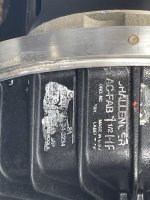I want to get a used pool pump to use as a backup, as well as for vacuuming the bottom for spring startup.
Currently I have a pakfab with 1.5hp single speed motor. I've found pakfab pumps, but the motors are either 1hp or 2hp, same rpm.
I'm guessing the lower hp would have to work harder and the 2hp would use more power than needed.
Is that correct or what should I be considering in this process?
Currently I have a pakfab with 1.5hp single speed motor. I've found pakfab pumps, but the motors are either 1hp or 2hp, same rpm.
I'm guessing the lower hp would have to work harder and the 2hp would use more power than needed.
Is that correct or what should I be considering in this process?


